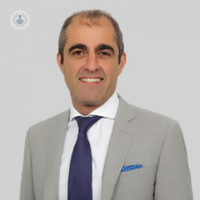Tuberous breasts: how are they corrected?
Escrito por:A tuberous breast deformity (TBD) is a spectrum of disease, which is characterised by three major features:
- Lack of breast parenchyma (tissue) or volume
- Lack of skin over the lower half of the breast
- Herniation of the nipple-areola complex
There have been lots of classifications but the most widely adopted is the Von Heinburg classification, which grades TBD from 1-4 in increasing severity. Following an assessment by leading London plastic surgeon Mr Jallali, you will be graded accordingly. This grading is important as the treatment really depends on the severity of the deformity. Here, Mr Jallali explains more about the condition...

What problems can tuberous breasts cause?
Tuberous breast deformity usually presents with asymmetry or occasionally can also be bilateral. The breast asymmetry is problematic functionally because patients have difficulty with clothing and wearing bras. There’s also a significant psychological impact of this condition and most ladies that I see have difficulty forming relationships and feel embarrassed about their physical appearance.
There is a misconception that patients seeking TBD often want larger breasts. In my experience, the main concern is trying to achieve symmetry. Counterintuitively, once the TBD has been corrected, patients often prefer the TB side and often undergo further surgery on the contralateral side in order to make them fully symmetrical.
How do you correct tuberous breasts?
This is a very specialised area and requires careful assessment and a surgical plan. For some patients, rarely breast augmentation is sufficient in order to increase the skin of the lower pole (the lower part of the breast). However, in most cases, patients require a process known as ‘tissue expansion’ in order to steadily increase the amount of skin over the lower pole of the breast.
Following this, the expander is often exchanged for an implant and the patient may then choose to undergo correction of their nipple areola complex at that second operation. It is important to bear in mind that corrective TBD can be a multi-stage procedure and may take many months. However, most of the patients who have the treatment are very happy and go on to form a relationship and find that, functionally, their symptoms improve dramatically.



